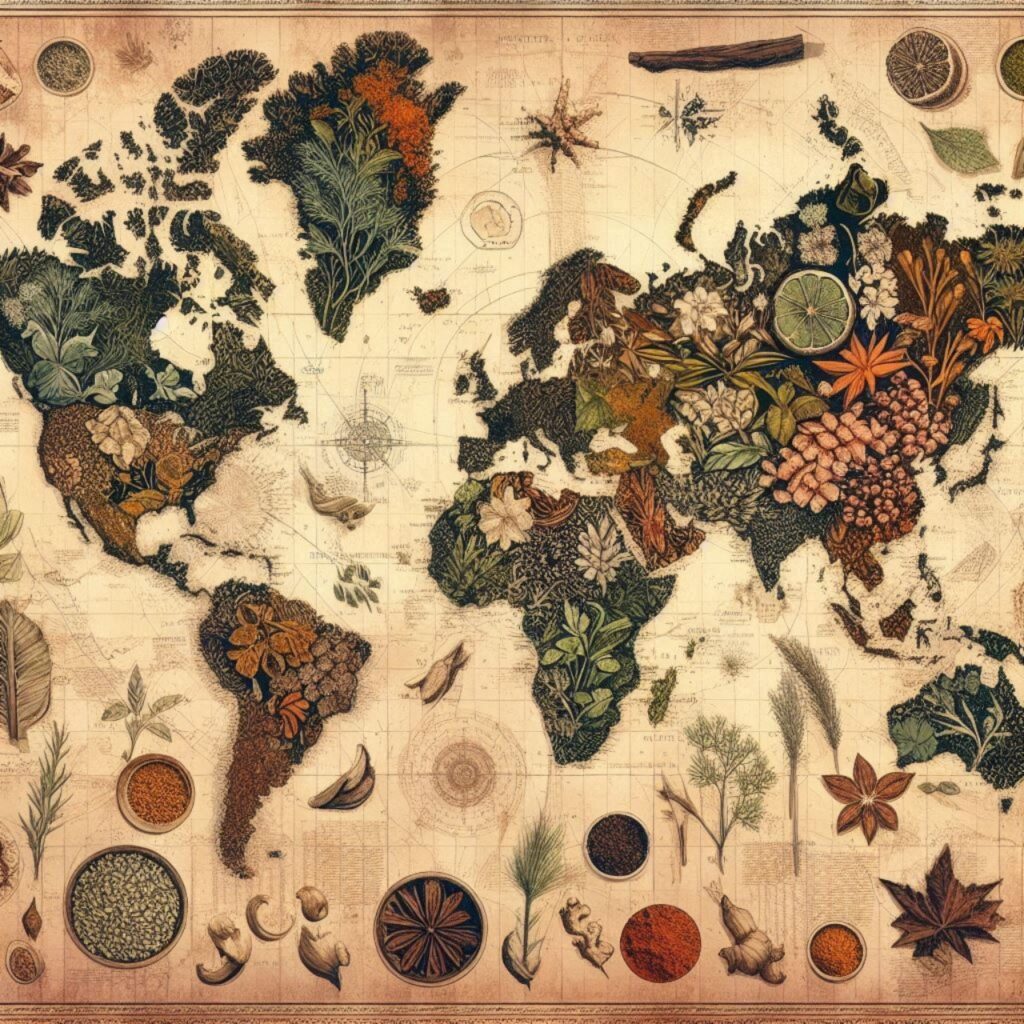The Ohsawa Map - The Geography of Cure Oregano

🌿 Oregano: The Firestarter of the Mediterranean Belt
“Every illness is the body’s revolt against a misplaced environment.” — George Ohsawa
Welcome to the whispering latitudes. This is the page where oregano stops being just a pizza topping and reclaims its place as a sun-coded medicinal force—tuned to geography, terrain, and evolutionary weather maps.
Why Oregano Doesn’t Show Up in Dumplings or Borscht
🌍 HERBS AS LATITUDE SPELLS:
Why Oregano Doesn’t Show Up in Dumplings or Borscht
What if herbs are climate-coded intelligences? What if the herbs that grow together evolved to heal the same patterns—shaped by sun angles, soil bacteria, humidity, and human habits?
Here’s the Ohsawa twist:
“The body is a reflection of its environment. The cure is always local.”
So the Earth… writes prescriptions by latitude.
🌀 The Latitude Logic
🍃 The Mediterranean Band (approx 30°–45° N):
Dry summers, aromatic shrubs, olive-bark soils.
Herbs like:
Oregano
Thyme
Rosemary
Sage
Basil
Rocket/arugula
🧬 These herbs evolved high in volatile oils—a natural sunblock and antibacterial response to the dry, pathogen-heavy heat.
They became the lungs and livers of the cuisine: detox, protect, breathe.
👄 The flavor profile? Sharp, bitter, resinous, peppery = catabolic.
Catabolic means: break down fats, purge waste, signal digestion. These cuisines pair with olive oil, lemon, garlic, and fermented cheeses/meats to balance sunburned livers and salty coastal diets.
🌬️ The Northern Band (Russia, Scandinavia, Northern Europe):
Cold, wet, fungal, indoor seasons.
Herbs:
Dill
Caraway
Fennel
Horseradish
Juniper
Mustards
These are warming, mucous-clearing, and circulation-boosting. You’ll notice: way more ferments, pickles, warming roots and alcohol infusions (vodka + herbs = folk medicine).
Here the herbs guard against stagnation, cold lung damp, and microbial rot in long winters.
🌿 Eastern + Tropical Band (India, China, Southeast Asia):
Wet heat, humidity, parasites galore.
Herbs:
Holy Basil (Tulsi)
Ginger
Turmeric
Galangal
Coriander
Lemongrass
Here we shift toward spices and roots, with essential oils embedded deep in rhizomes. These cuisines had to master gut protection, heat dispersal, and infection defense.
Most meals contain:
Something cooling (mint, cucumber, coconut)
Something circulating (chili, ginger)
Something cleansing (tamarind, bitter greens)
🧠 A terrain-first cuisine for pathogen-heavy, emotionally humid, socially intense ecosystems.
🔁 The Doctrine of Resonance:
“What grows together, goes together—and works together.”
This is the herbal permaculture of culture. If oregano doesn’t show up in Russian or Chinese cuisine, it’s not ignorance. It’s that oregano’s job is already being done by:
Chinese mugwort (Ai Ye)
Russian tarragon (Artemisia dracunculus)
Asian mint, coriander seed, mustard seed
🧬
Oregano = Catabolic fire
Mugwort = Dream-piercing fire
Tarragon = Blood-moving fire
Mustard = Skin-purging fire
Different dialects of the same elemental language.
🌐 GeoHerbalism: Where This Herb Belongs
Oregano is Mediterranean-born, sun-trained, oil-rich. It lives in the catabolic band of the Earth—breaking down, drying out, detoxing. It thrives in rocky, dry, bacterial-rich soils where plants must protect themselves constantly.
Where oregano can’t grow, its energetic cousins take the torch.
This is a map, not a recipe.
🍕 Street-Cred Wrap-Up:
Oregano and its gang of resinous leaf herbs aren’t second-tier to “real medicine”—they are medicine. Just older. Smellier. Earth-coded. They speak the language of the sun, soil, and sickness long before we had white coats or product codes.
Call them pizza punks, but their resume says: antiviral, antifungal, carminative, immune-modulating, liver-clearing.
🌿 Herbs aren’t weak. They’re just regional.
